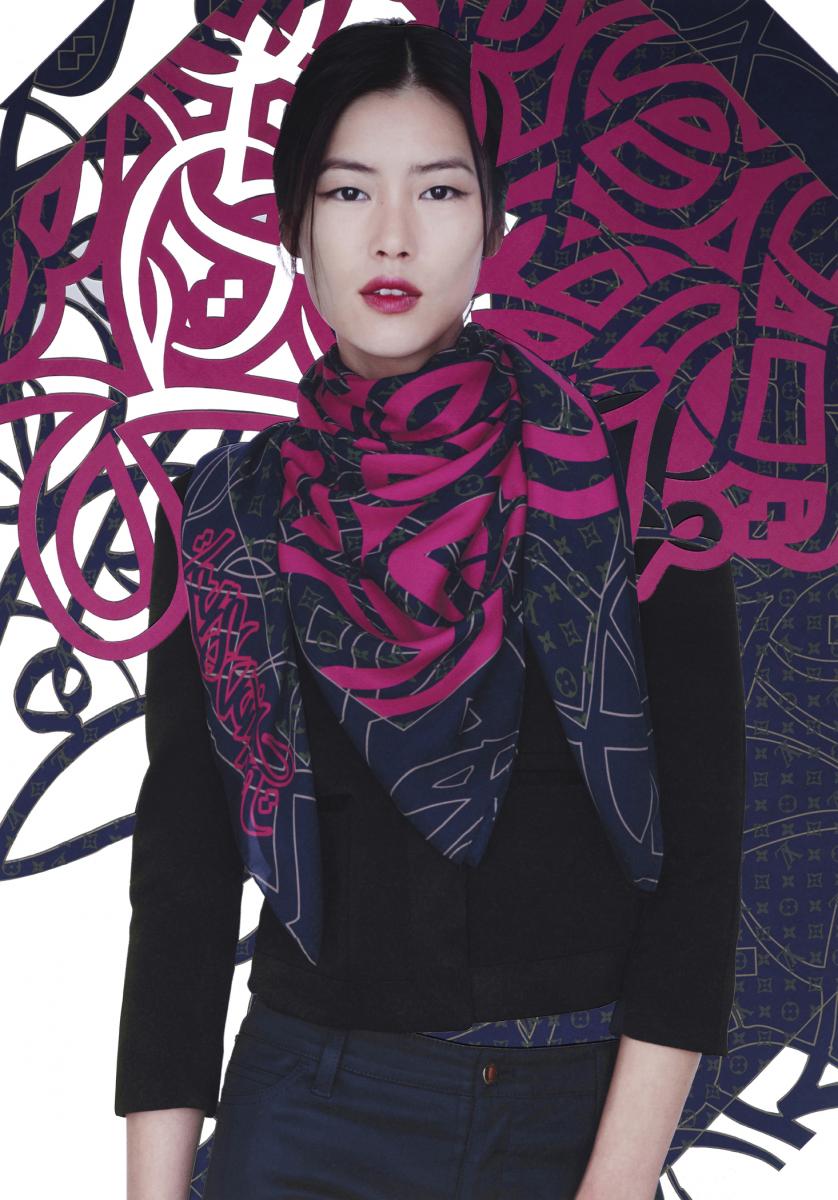Born in Paris to Tunisian parents, eL Seed consciously uses Arabic calligraphy and a distinctive style to spread messages of peace, unity and to underline the commonalities of human existence. His artwork can be found all over the world and consistently aims at unifying communities and redressing stereotypes. His work is the result of literary and philosophical research and carries direct significance to the place and community within which they are placed.
eL Seed has installed his work in public spaces, galleries and institutions on every continent and recently launched his most recent book ‘Perception’ at MoMA in New York. In 2017, he won the UNESCO Sharjah Prize for Arab Culture. He was named a Global Thinker in 2016 by Foreign Policy for his project ‘Perception’ in Cairo. In 2013, he collaborated with Louis Vuitton on their famous ‘Foulard d’Artiste,’ the first time the brand manufactured a product designed by an artist from the Middle East.
Majalla had the pleasure of interviewing eL Seed in light of his current solo exhibition, Tabula Rasa at Lazinc in London.
Q. Tell us about your background?
A. I was born and raised in the suburbs of Paris. My parents were immigrants from Tunisia. I am from a modest social background but my parents made sure my brothers and sister studied. I went to University and got a Master’s Degree in Supply Chain Management. Art has always been a hobby since childhood but it was at the birth of my daughter that I quit my job as a business consultant to focus on my art.
Q.What was your first memory of art? How did you discover your form of artistic expression?
A. I remember a kid called Yannick who was 6 when I was 7. He was our neighbor. His mom used to drop him off at our house as she was starting work early. He had a school book called ‘Ratus et ses amis’ and there was a double page with a big drawing. I remember re-drawing this double page on a big sheet of paper every morning for weeks. Everyday Yannick was so excited to see the evolution of the drawing.
I have been drawing since I was a kid.
Q. Who are your biggest influences; people, styles, you looked upon while establishing your visual language?
A. Traditional calligraphy, old school graffiti artists.
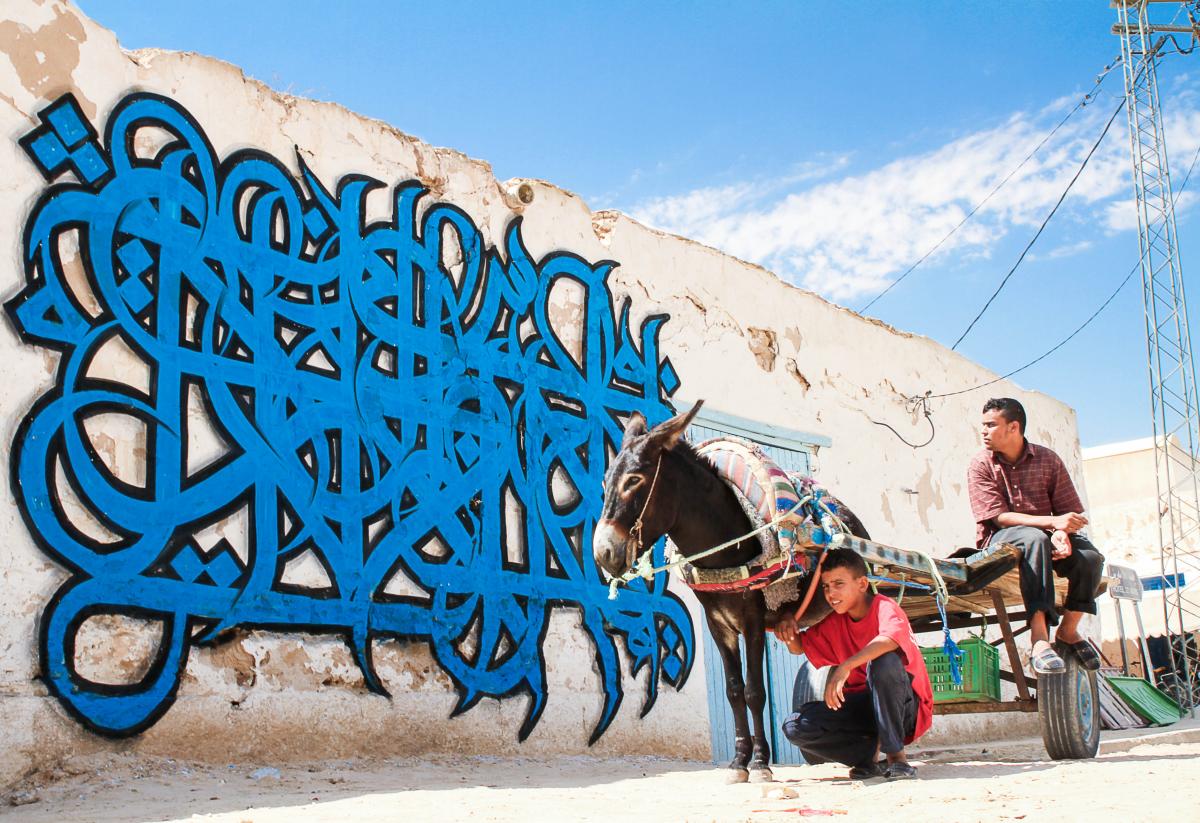
Q. When and why did you begin to ornament public buildings and spaces? How does your creative process look like?
My first wall was painted in 1998 in my neighborhood in the suburbs of Paris. I thought it was cool. Later when I started painting in Arabic, I felt that painting in a public space in large scale had so much impact and freedom that I couldn’t think of anything else. I remember painting in this abandoned factory. Sometimes, I was the only person who could see or saw my artwork in real.
My creative process is really spontaneous. I usually do not sketch my mural. I know what I am writing and I just go with the flow, free hand.
Q. What guides you in your work, how do you begin choosing the location of your next project and the message you want to convey there?
A. The process of my art has evolved. I believe, as an artist working in the public space, I have a social responsibility. It usually starts with a theme, an issue I want to highlight, then I look for the perfect place to do the artwork, and finally, I find the appropriate message. The message takes a long time sometimes. The research is really important. I have to make sure the message is relevant to the place and to the people.
Q. Tell us about your current solo exhibition at the Lazinc art gallery?
A. For this exhibition, I have taken a step further by attempting to strip down my thought process as an artist, in an effort to access my own tabula rasa, if indeed it is possible. Expect to get a better grip of Arabic script and its beauty through a calligraphic experience.
I take the idea of tabula rasa as a starting point and implant it onto the deep-seated preconceptions that are commonly held about the Arabic script and culture. The idea of the human mind as a ‘tabula rasa’ occurred late in the 17th century, when the English philosopher John Locke in an essay concerning human understanding (1689), argued for the mind’s initial resemblance to “white paper, void of all characters,” with “all materials of reason and knowledge” derived from experience. Essentially, he says that the human mind at birth is a complete, but a receptive, blank slate (or tabula rasa) upon which experience imprints knowledge.
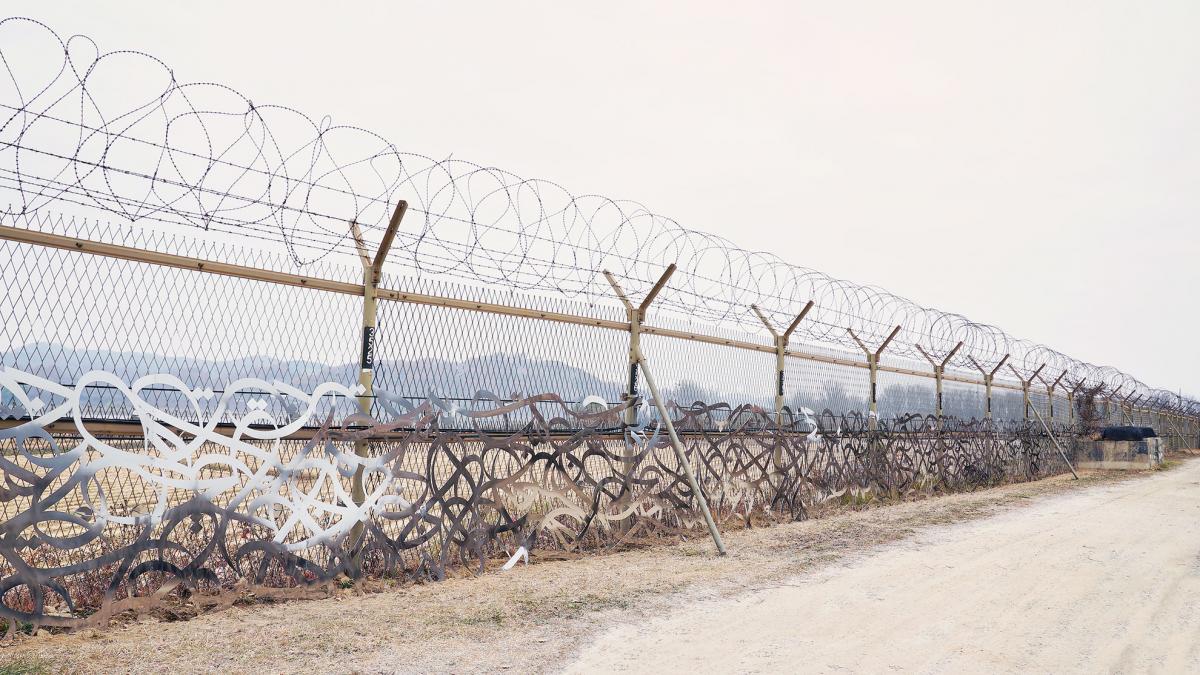
Q. There exists a mystery that connects with your soul as soon as you observe a piece of calligraphy that happens at a different level beyond mere comprehension, where an implicit message is hidden behind every stroke and every letter. How does this impact the way you practice your art and the way people perceive it?
A. I believe that Arabic script speaks to your soul before it reaches your eyes, and when you get the meaning, you feel connected to it. I always make sure to write the messages that are relevant to the place where I’m painting, messages that have a universal dimension, so anyone around the world can feel connected to it. I stopped writing the translation of the artwork on the wall as I don’t want the poetry of the calligraphy to be broken. As it is art, you can appreciate it as it is, in the way that you can enjoy any music from other countries. Some people see it as a rejection, or closed doors, but for me it is more of an invitation to my language, to my culture and to my art.
I feel there are many layers to reading my artwork. The first one is the aesthetics. There is a beauty in the dynamic of calligraphy. The second layer is the message. People who want to go deeper than just the beauty will recognize the script and wonder if there is a meaning or if it just letters put together. And the last layer is the political and social context of where the art piece is created. It is important that that depth and meaning are in each piece I create.
Q. You said that Arabic calligraphy helped you to accept your French identity. Can you talk to us about that?
A. Growing up in France, I felt I was disconnected from my Arab roots and not fully French. The social and political climate I was growing up in made me feel I needed to choose between one of these two identities. I ran into to my Arabic roots and ignored my French culture. The more I was digging into my Arabic culture, the more I realised that I would never have been able to do what I am doing if I wasn’t born and raised in France. I made a mistake by thinking that I needed to choose. Arabic calligraphy allowed me to reconcile these parts of my identity.
Q. What are the messages and ideas you are trying to implement through your art into society’s social conscience and why are they of particular interest to you?
A. I perceive my artwork as a tangible expression of my search for identity, both as an individual and as an artist. My compositions, that combines the freestyle technique of street art with traditional Arabic calligraphy, reflect the tension represented in my hyphenated identity. Arabic Calligraphy helped me reconcile two parts of my identity. Today, I use it as a tool to bring people, cultures and generations together.
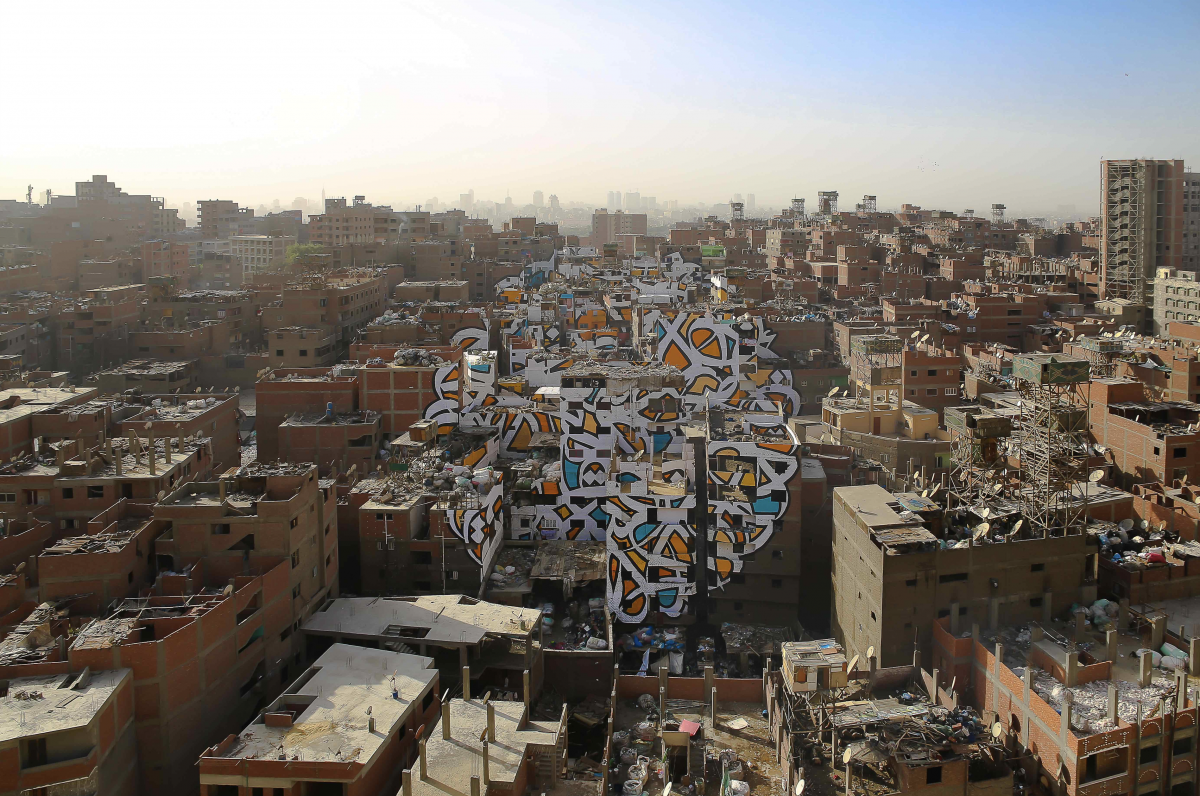
Q. You have described your project in Cairo, Egypt as the most amazing human experience you have ever lived. What spurred you to launch this project and why was this experience significant to you?
When I decided to create an art piece in Manshiyat Naser, the neighborhood of the Cairo garbage collectors in Egypt, I never thought this project would be the most amazing human experience that I would ever live. As an artist, I had this humanist intention of beautifying a poor and neglected neighborhood by bringing art to it and hopefully shining a light on this isolated community.
My perception towards the community changed during the project, and towards what they do. All the garbage that everybody is disgusted by is not theirs. They just work out of it. Actually, they don’t live in the garbage. They live from the garbage. So I started doubting myself and wondering what was the real purpose of this whole project? It was not about beautifying a place by bringing art to it. It was about switching perception and opening a dialogue on the connection that we have with communities that we don’t know. The community welcomed my team and me as if we were family. It was one of the most amazing human experiences I have ever had. They are generous, honest and strong people. They have been given the name of Zabaleen (the garbage people), but this is not how they call themselves. they don’t live in the garbage but from the garbage; and not their garbage, but the garbage of the whole city. They are the ones who clean the city of Cairo.
Q. Can you single out other important milestones in your career?
A. I think the painting on the Minaret of Jara Mosque in my hometown of Gabes. In 2012, when I painted it, I never thought that graffiti would bring so much attention to a city.
In the beginning, I was just looking for a wall in my hometown, and it happened that the minaret was built in '94. And for 18 years, those 57 meters of concrete stayed grey. When I met the imam for the first time, and I told him what I wanted to do, he said: "Thank God you finally came," and he told me that for years he was waiting for somebody to do something on it. The most amazing thing about this imam is that he didn't ask me anything, neither a sketch or what I was going to write.
In every work that I create, I write messages in my style calligraphy. I use quotes or poetry. For the minaret, I thought that the most relevant message to be put on a mosque should come from the Quran, so I picked this verse: "Oh humankind, we have created you from a male and a female, and made you people and tribe, so you may know each other." It was a universal call for peace, tolerance, and acceptance coming from the side that we don't usually portray in a good way in the media.
I was amazed to see how the local community reacted to the painting, and how it made them proud to see the minaret getting so much attention from international press all around the world. For the imam, it was not just the painting; it was really deeper than that. He hoped that this minaret would become a monument for the city, and attract people to this forgotten place of Tunisia. The universality of the message, the political context of Tunisia at this time, and the fact that I was writing Quran in a graffiti were not insignificant. It reunited the community.
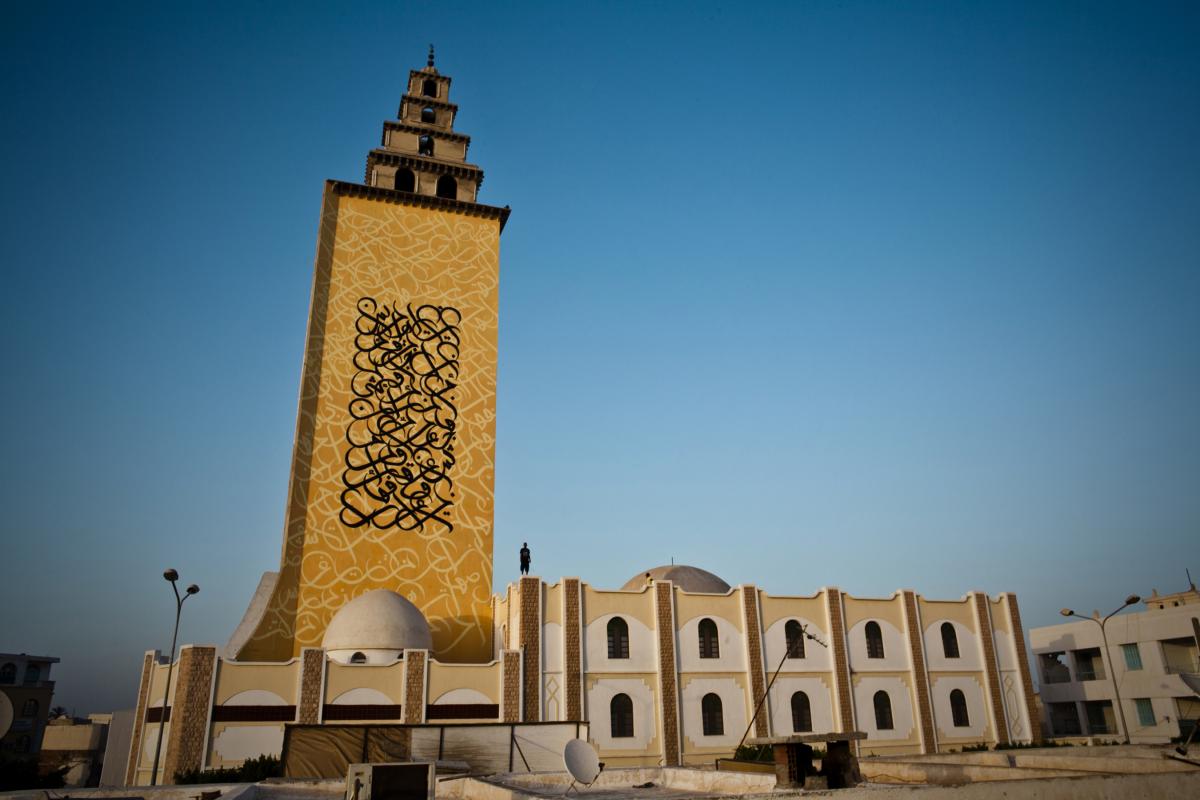
Q. You have painted murals all over the world. Where would you still like to explore? What do you collect when you travel?
A. There is so many places to visit, people to meet and stories to tell. I usually do not collect anything. I write the stories, the memories that I have and publish them sometimes or keep them. The most important thing in what I do is the human experience.
Q. Can you tell us about any special projects that you are working on now?
A. Secret. I never say anything about what I haven’t done yet.
Q. When you're not painting, what other interests do you have?
A. I love running and cooking. My kitchen is an extension of my studio.
The exhibition ‘Tabula Rasa’ by eL Seed is on view until March 9, 2019, at Lazinc, 29 Sackville Street Mayfair, London, W1S 3D. www.lazinc.com
